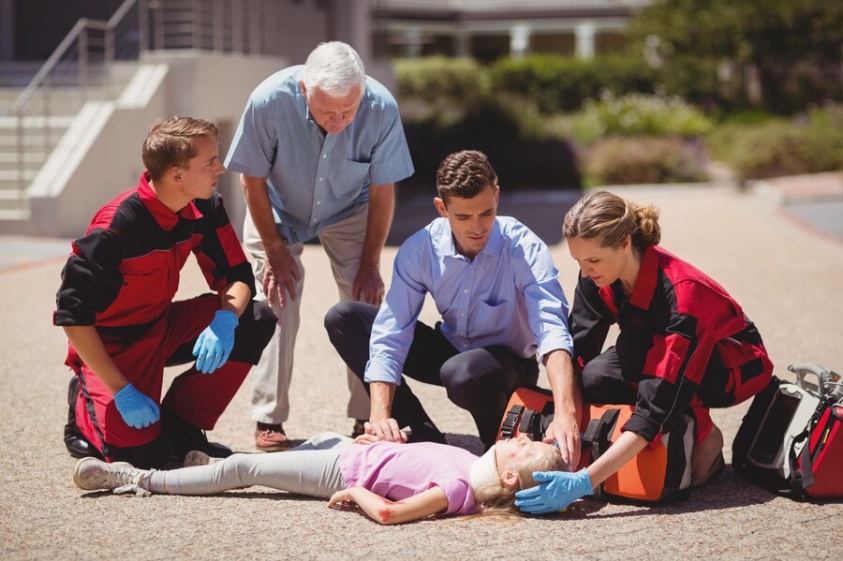Extreme weather disasters, such as hurricanes, wildfires, and earthquakes, can force you to leave your house quickly. In contrast, weather events like snowstorms and prolonged power outages could trap you inside your home for several days, possibly even without access to running water or electricity. One of the best things you can do to improve the disaster preparation of your house is to put together an emergency pack. An emergency kit is your go-to for emergencies such as power outages, natural disasters, accidents, and injuries. An emergency kit should include everything you and your family require to remain secure, well, and self-sufficient for seventy-two hours without access to extra supplies.
This extensive guide will discuss the components of your house emergency kit. These carefully chosen supplies will help you handle various situations, from everyday household ailments like cuts and burns to natural calamities and lousy weather.
Check out the list of additional safety and emergency items and get more insights by connecting with ASPIS Emergency Preparedness.
Here are the 10 most crucial emergency items one must keep to ensure safety concerns:
1# First Aid Box
First and foremost, having a first aid kit on hand is pivotal for treating injuries and preventing infections if you cannot visit a clinic or hospital promptly. It should include bandages for minor cuts, gauze and medical tape for deeper wounds, small scissors, tweezers to extract glass fragments or other foreign objects from wounds, alcohol sanitizer wipes, and an instant cold pack. Include three days' worth of prescription medications in your emergency bag if you have any. To avert any situation that can create emergency issues.
2# Water is a Live Safer!
Water is a basic necessity that no one can survive without. A minimum of three liters of water per person per day should be included in your emergency kit; one liter should be used for drinking and the other for washing and hygiene. For instance, if your family consists of three people, you should bring nine liters of water daily for at least three days. Provide additional water each day for your family pet if you own one.
3# Other Dehydrated Meats
Jerky is a fantastic protein source in various flavors, from classic beef to the unusual ostrich and lamb. Jerky keeps well for a long time, but to keep its freshness, it needs to be held in an airtight, sealed container. If stored correctly, jerky can have a multi-year shelf life. It can be carried during times of emergency.
4# Take Food Items with you!
While prepared foods and dry products with high protein, carbohydrate, and salt content come to mind, fruits and vegetables should also be included in your emergency food supply because they are easily kept and vital. Canned food is frequently on sale at grocery shops, so keep an eye out for deals on necessities for emergencies. Not only will this ensure that your diet is full of vital vitamins and nutrients, but it will also help provide some variety to daily emergency meals.
5# Supplies for Hygiene
Lack of access to air and clean water can harm one's health. Maintaining and ensuring hygiene prevents infections and germs from spreading frequently.
Usually, minor wounds might become significant or even deadly sites of infection during a crisis. Wound infections and gastrointestinal problems are prevalent during natural disasters like heavy rainfalls and hurricanes.
Packed with standard personal hygiene products, it will help you stay sanitary and in good health, in addition to a first aid kit, hand sanitizer, waste bags, and face masks. The following are crucial hygiene items for your survival kit: tissues, menstrual tampons, shampoo, diapers, cleaning wipes, toothpaste, floss, and soaps.
6# Extra-Battery Flashlight
Power outages are sudden and can create blackouts in the blink of an eye. A torch is another essential item to include in your emergency kit in case of a power loss. To prolong your smartphone's battery life, avoid using the torch feature in the event of a power outage in your home. In addition to the built-in light on your hand-crank radio, a torch that runs on batteries can also aid with your vision in an emergency. Increase your preparedness for emergencies by including glow sticks, candles, candle stands, and matches in the emergency supply bag at your house.
7# Crucial Documents
Your emergency bag should contain copies of your passports, health cards, birth and marriage certificates, insurance policy documents, wills, and emergency contacts. In addition to paper ones, save electronic copies of must-have papers on an encrypted USB stick or in a safe cloud-based account.
8# Regional Maps
Keeping a map of the nearby area in your survival kit can help you navigate in an emergency if your phone's GPS fails. On your map, highlight areas that need to be located in case of any natural disaster.
9# Keep Cash Amount
If you need to purchase additional supplies, carry extra cash in your pack through tiny notes and coins. Further, If there is a widespread power outage, you won't be able to withdraw money from your bank account, and merchants (if they are open) won't be able to accept credit card or mobile payments.
10# Whistle for Safety
A safety whistle can help search and rescue crews find you if you become lost and need assistance.
11# Emergency Blankets to Prevent Cold
Staying dry and warm in an emergency can differentiate between life and death. Lightweight thermal energy blankets can store body heat, and their reflective sides can attract people's attention from a distance.
Concluding it Up!
Remember to routinely check and refresh your emergency box to ensure everything is in working order and your supplies have stayed supplied. Customize your equipment based on your area's requirements and possible hazards. Additionally, it is imperative to practice emergency exercises with your household members regularly and have an emergency plan that includes evacuation routes and meeting places.
ASPIS Emergency Preparedness is all set to help to navigate emergencies. Reach us!


No comments yet